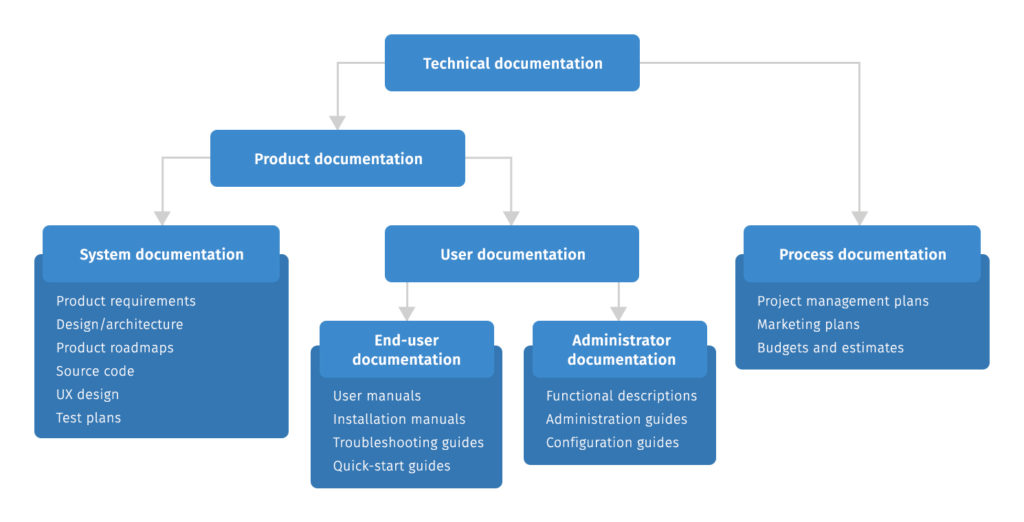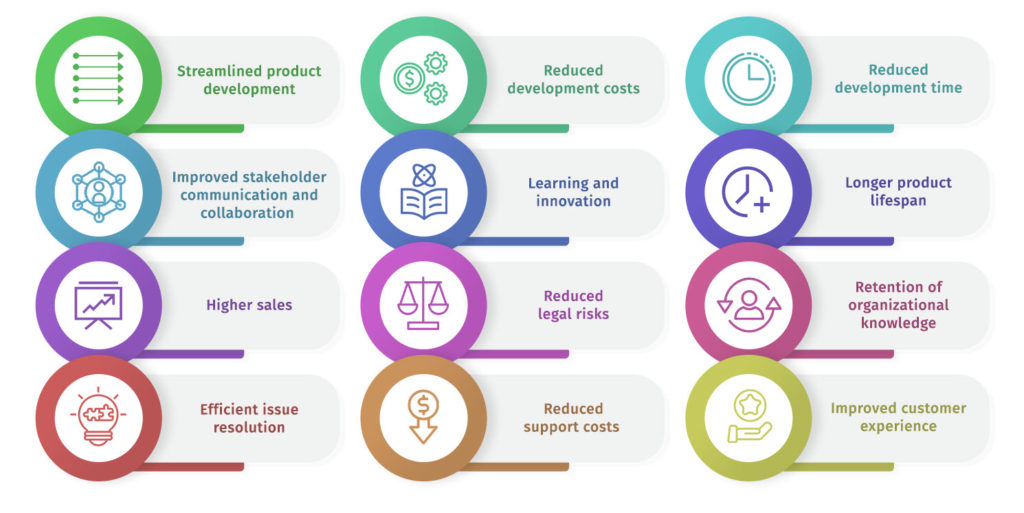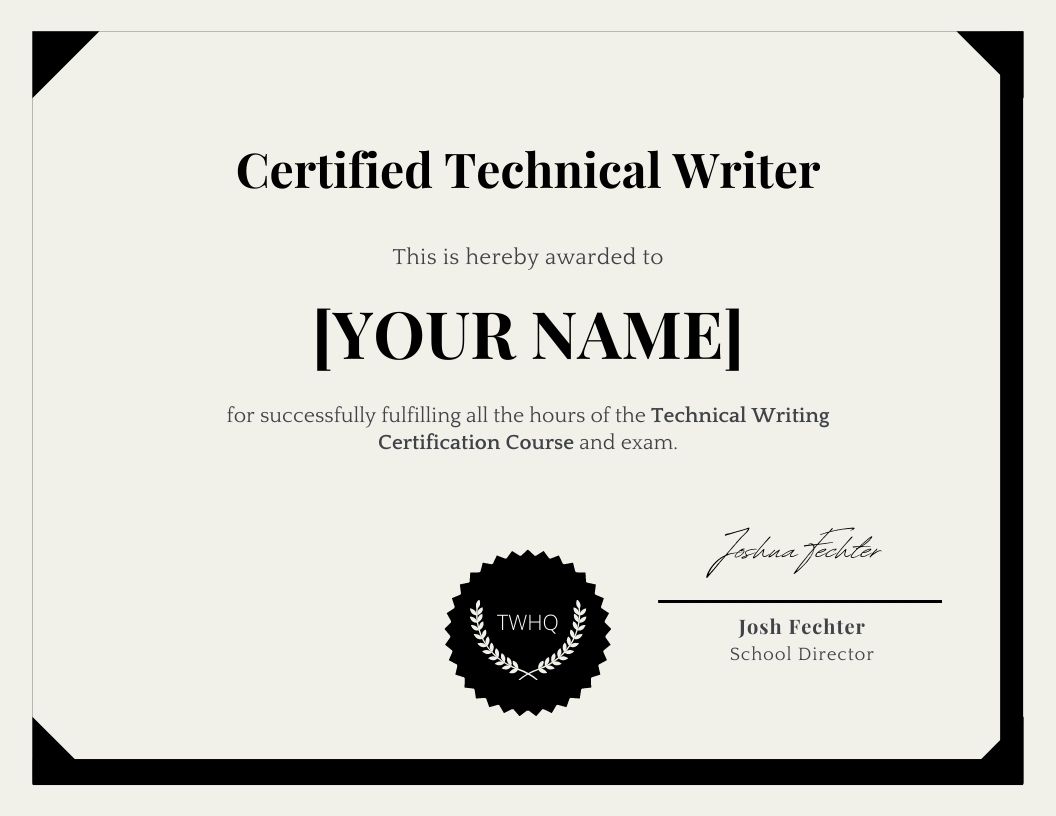Technical documentation encompasses articulated and straightforward technical user guides. Technical documents explain the functionality of a product in simple terms.
Writing technical documentation requires product understanding and user feedback. Many aspects involved in technical documents are exhaustive and involve intricate details.
What are Technical Documents?
Technical documents describe the functionalities and features of a product. Writers typically create technical documentation for the software development and engineering industries, while product teams and project managers manage and maintain it.
These documents enable clear communication about technical processes. They are tailored to the intended audience to simplify complex technical details, providing information about the usability and functionality of specialized products. Writers often create how-to guides using up-to-date information to demonstrate a product’s functionality.
Technical documentation includes specifications like:
- Uses
- Functionality
- Features
- Development
- Methodology
Great technical documentation embeds the end goal into the content alongside these descriptions. These user guides focus on explaining specific aspects of new technical products to readers, contributing to the product development lifecycle in software companies.
Technical Documentation: The Backbone of Software Development
Technical documentation serves as the backbone of administration and operations in a company, simplifying processes for end-users. It provides detailed descriptions of products to ensure they are easy to understand and use.
Rather than capturing raw product information, technical documentation transforms it into:
- Usable
- Readable
- Simple
- Understandable
- Helpful
Professionals often refer to software documentation as the “nuts and bolts” of a product. It acts as a form of customer support, ensuring user satisfaction.
Technical documentation supports employees, users, and other audiences by playing a critical role in the development cycle. End-user documents serve purposes such as:
- Knowledge transfer
- Development support
- Maintenance
To achieve this, developers must ensure error-free documentation that aligns with the product. Online technical documentation provides user instructions based on project plans and insights gained from software testing. Embedding project-related information is crucial for creating effective technical documents.
Want to learn how to create outstanding technical documentation? Check out our technical writing certification course!
Who Can Use Software Documentation?
Technical documentation is used across industries such as IT, medical, marketing, and engineering. The audience often includes end-users, stakeholders, and, in some cases, programmers who reference user manuals.
The type of technical documentation determines its audience. For instance, product documentation is valuable for both end-users and stakeholders. End-user documents focus on helping people use the product, while process documents are crafted for stakeholders, including software developers and engineers, to convey technical details about the product.
The goal of any technical document is to benefit its audience. End-users should be able to use the product effectively after reading the documentation, while process documents provide the detailed information stakeholders need. Different types of documentation serve varying purposes, so their content and structure must align with the intended audience.
Why Create Technical Documentation?
Technical documentation simplifies complex product or software concepts, making them accessible to users. Without it, companies risk leaving their audience without essential information, leading to incorrect product usage and dissatisfaction.
Product documentation helps users understand functionality, making it a vital part of product distribution. It also reduces customer dissatisfaction and service hours, contributing to a better return on investment (ROI) for companies.
User documentation allows readers to troubleshoot issues independently and find answers to their questions. Internally, process documentation supports employees by explaining product workflows and providing an overview of product planning. This ensures smoother operations and a better understanding of new products.
Technical Documentation Types

The industry recognizes two main types of technical documentation: product documentation and process documentation. These categories help organize and communicate information about products or software.
Product Technical Documents
In product documentation, the content focuses on a product and its instructions. It includes the steps of performing tasks with the product as users, rather than developers. It also showcases information about products that a company has developed.
Process documentation includes operating procedures like:
- Requirements
- Business logic
- Manuals
- Tech specifications
Technical documentation writers call this user documentation because it contains details of the finished product and focuses on the end product rather than the development process.
The style of this documentation will vary by audience:
- Users
- Team members
- Stakeholders
- Engineers
- Programmers
There are two sub-categories of process documentation:
System Documentation
System documentation describes the system and the parts involved in it, including the development process, like:
- Documents required
- Design decisions
- Program source code documentation
- FAQs
User Documentation
This document involves the instruction and installation manuals curated for users and system administrators. It supports user needs by including:
- User guides
- Installation documentation
- Troubleshooting manuals
- Reference manuals
- Tutorials
Product Technical Documentation Examples
- User manuals
- Updates and project reports
- API Documentation
Process Technical Documents
Technical documentation that includes process documentation involves the maintenance and development process.
A documentation writer creates manuals to support marketing efforts. Process documentation focuses on product development and outlines specific steps for product use. It ensures the content aligns with user needs.
This document can also include release details, event data, and other elements that contribute to the product’s evolution and progress. Development teams use it to transfer knowledge, release notes, and document lifecycle stages.
Product Technical Documentation Examples
- Project proposals
- Project plans, reports, etc.
- Working papers
Benefits of Solid Technical Documentation

Technical documentation offers numerous benefits for software engineers, project managers, and system administrators. A well-structured and accurate approach ensures both companies and users achieve their goals. Effective technical documentation provides satisfaction for all stakeholders.
If you are developing a product, your business rules should align with the product, and your development team should adhere to a successful test schedule. The ultimate goal is for consumers to enjoy the end product.
As a customer, having a clear understanding of the product’s functionality and usability is essential. Technical documentation enables customers to utilize the product’s features and services. Additionally, technical landing pages on websites can empower visitors by providing detailed and accessible product information.
Adequate technical documentation uses structured descriptions to highlight every aspect of the product. It ensures clarity and usability, benefiting both the development team and end users. Writers with strong API documentation skills can also enhance online support systems, contributing to better product experiences.
Writing Requirements to Create Technical Documentation
Creating technical documents requires both skill and experience. Writers develop documentation based on user needs by implementing version controls, roles, and permissions. Here are key steps to produce high-quality technical documentation:
- Consider the technical documentation template or design.
- Research the type of documentation required.
- Outline the content in a detailed documentation plan.
- Review and refine the content with multiple rounds of edits.
- Understand the product requirements before starting.
- Test your documentation’s effectiveness through trial and error.
- Publish and establish a standard protocol from user stories.
Proper planning and understanding of testing schedules are essential for technical documentation. To create effective documents, technical writers should follow best practices:
- Develop a clear plan.
- Ensure transparency in documentation.
- Avoid redundant information.
- Create concise and accessible content.
- Maintain consistency and adhere to the documentation plan.
- Focus on audience needs and usability.
The Bottom Line
Technical documentation addresses all potential user questions and ensures your product remains functional and user-friendly. It provides essential details about features, developmental processes, and serves as a strategic guide to enhance product usability.
FAQs
Here are the most frequently asked questions about technical documentation.
What is the purpose of technical documentation?
Technical documentation simplifies complex product information, making it easy for users and stakeholders to understand functionality, usage, and development processes.
Who are the audiences for technical documentation?
Audiences include end-users, developers, engineers, stakeholders, and system administrators, depending on the type of documentation (e.g., product or process).
What are the types of technical documentation?
The two main types are product documentation (focused on product usage) and process documentation (focused on development and maintenance processes).
Why is technical documentation necessary for companies?
It enhances usability, minimizes customer dissatisfaction, reduces service hours, and supports smoother product development and maintenance cycles.
If you are new to technical writing and are looking to break in, we recommend taking our Technical Writing Certification Course, where you will learn the fundamentals of being a technical writer, how to dominate technical writer interviews, and how to stand out as a technical writing candidate.






